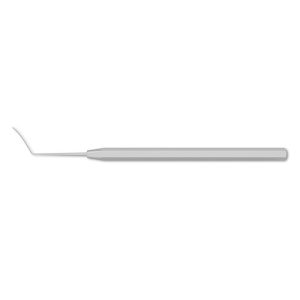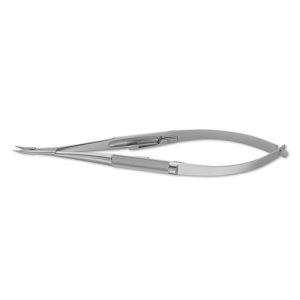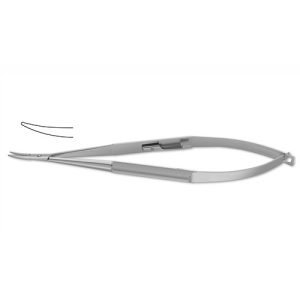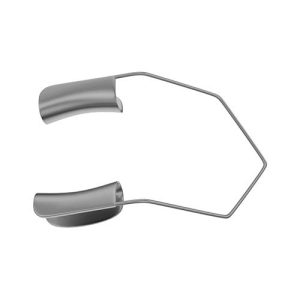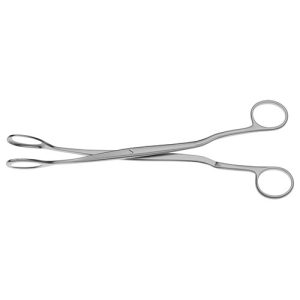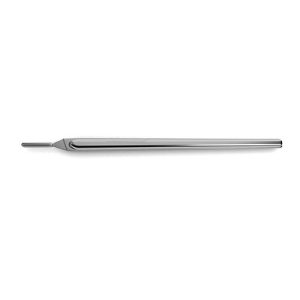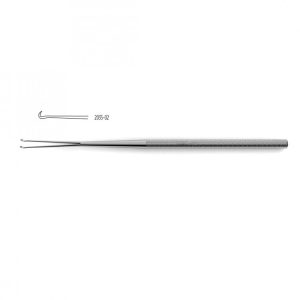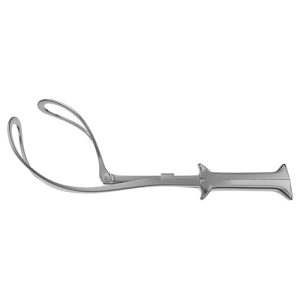Barraquer Iris Spatula
hexagonal handle, 3-1/2" (9.0 cm)?Barraquer Iris Spatula is a commonly used tool in cataract surgery. The spatula is used to hold the iris in place while manipulating the lens capsule and nucleus. The spatula is commonly used to rotate the nucleus to a desired position for extraction. The spatula features an angled tip for easier manipulation while minimizing surgical obstruction. Two sizes are available with the spatula depending on surgical preference.
Barraquer Micro Needle Holder
Standard pattern, round handles, 5" (12.7 cm)
Barraquer Micro Needle Holder is handcrafted from surgical grade German stainless steel and designed with a reliable, smooth grip jaw. Designed with either a straight or curved jaw with optional lock, this instrument is often used for ophthalmic procedures. The round handles offer non-slip, comfortable control.
Barraquer Needle Holder – Delicate, 10mm Jaws
delicate, 10.0 mm jaws, round handle, 5-1/2" (13.9 cm)?Barraquer needle holder is a often used tool in postoperative management of ophthalmologic surgeries. The holder may be used for suturing the conjunctiva, sclera, or extraocular muscles. This model features 10 mm jaws for use with standard or fine suturing needles. A locking mechanism is included to free the surgeon's hands as desired.
Barraquer Needle Holder – Delicate, 9mm Jaws
Barraquer needle holder is a often used tool in postoperative management of ophthalmologic surgeries. The holder may be used for suturing the conjunctiva, sclera, or extraocular muscles. This model features delicate jaws for fine or standard suturing needles, and features a locking mechanism as desired. Both straight and curved profiles are available depending on surgical preference.
Barraquer Needle Holder – Extra-Delicate
extra delicate, 9.0 mm tapered jaws, round handle, 5-1/4" (13.3 cm)?Barraquer needle holder is a often used tool in postoperative management of ophthalmologic surgeries. The holder may be used for suturing the conjunctiva, sclera, or extraocular muscles. This model features extra delicate jaws for fine suturing needles, and features a locking mechanism as desired. Both straight and curved profiles are available depending on surgical preference.
Barrett Placenta Forceps
Barrett Tenaculum Forceps
Barron Knife Handle
octagonal, for blades 10-15c, 5-1/2" (14.0 cm)
Barron Knife Handle #3 is an octagonal shape that holds blades 10-15c. This pencil-shaped device is also tapered and provides the surgeon with increased control while making a precise incision. The octagonal design also is made for the tips of the fingers to direct the depth and course of the incision.
Barsky Skin Hook
Knurled handle, 6" (15.2 cm), sharp
Barsky Skin Hook can be used in various medical procedures where skin or soft tissue needs to be maneuvered, such as procedures involving plastic surgery or ophthalmology. The knurled handle contributes to a better grip for the surgeon, and the hook at the end contains a sharp prong that can be single or double. The high quality stainless steel used to produce this instrument may help to prevent bacteria from adhering to its surface during an operation.
Barton Obstetrical Forceps
14" (35.5 cm) Barton Obstetrical Forceps are commonly used to aid in the delivery process when the fetal head is in the high transverse position, commonly seen during a cesarean delivery. The forceps feature a fixed posterior cephalic blade and a hinged anterior blade to firmly grasp the fetal head once locked. The blades are fenestrated to allow palpation by the surgeon and to provide minimal discomfort to the child's head.

